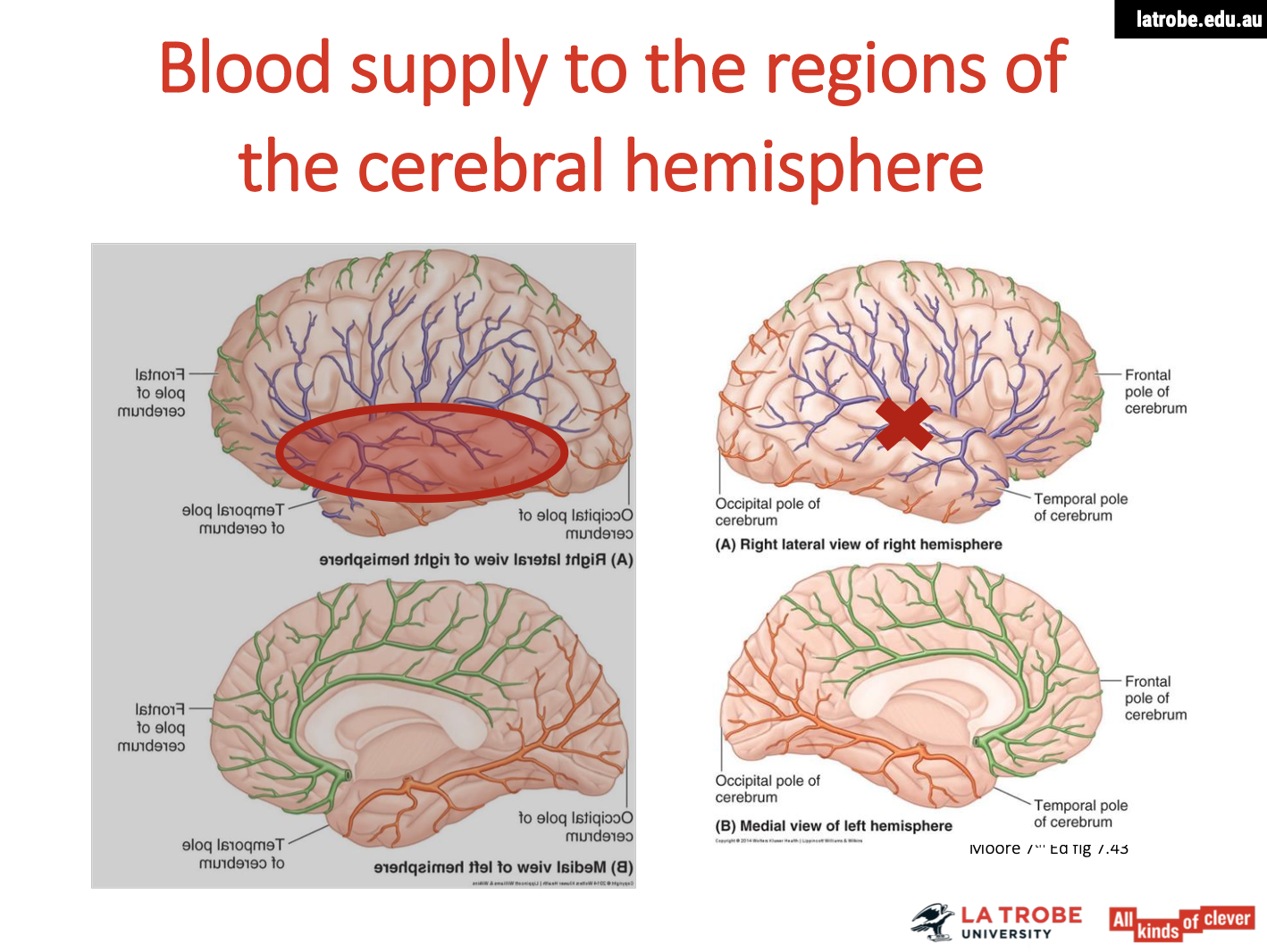Processing when damaged
1/11
There's no tags or description
Looks like no tags are added yet.
Name | Mastery | Learn | Test | Matching | Spaced |
|---|
No study sessions yet.
12 Terms
Impact of Blood Supply Blockage on Brain Function
Impact of Blood Supply Blockage on Brain Function
Consequences of Blocked Blood Supply
Brain Tissue Death:
Tissue can die within minutes if deprived of blood supply.
Affected brain areas lose their ability to perform specialized functions.
Potential Damage to the Occipital Lobes
Location:
The occipital lobes are located at the back of the brain, with a left and right hemisphere.
Difficulties Resulting from Damage to Occipital Lobes
Visual Processing Issues:
Difficulty recognizing and interpreting visual stimuli.
Problems with visual memory, such as recalling what objects look like.
Visual Field Loss:
Hemianopia: Loss of vision in one half of the visual field in both eyes.
Quadrantanopia: Loss of vision in a quarter of the visual field.
Agnosia:
Inability to recognize familiar objects, faces, or places despite intact vision.
May affect the ability to understand visual information.
Difficulty with Spatial Awareness:
Challenges in judging distances or navigating spaces.
Problems with orientation, leading to difficulties in movement and balance.
Summary
Damage to the posterior parts of the occipital lobes can result in significant visual deficits, affecting a person’s ability to interpret and interact with their visual environment. This underscores the importance of blood supply to maintain brain function and the consequences of injury or disease.
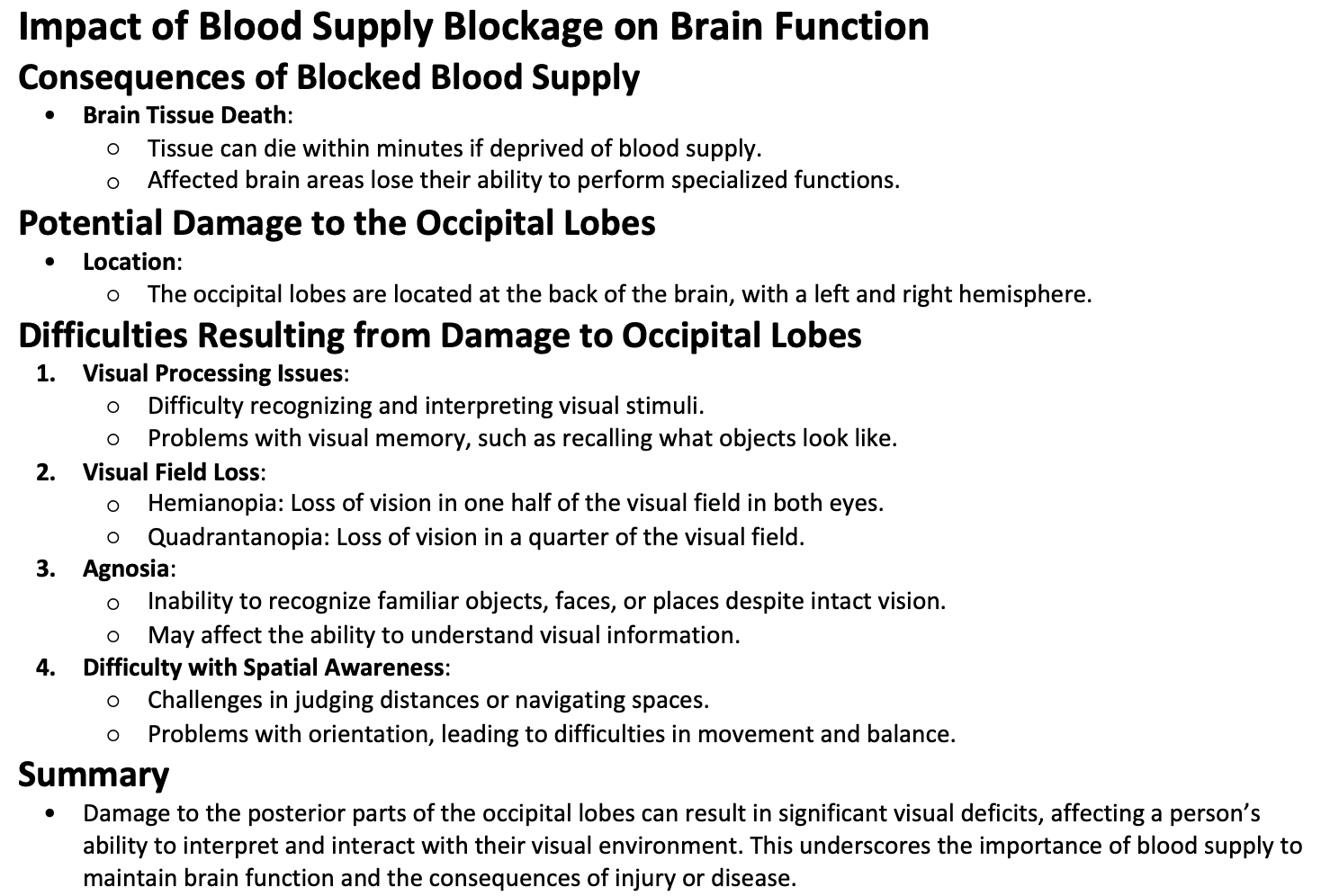
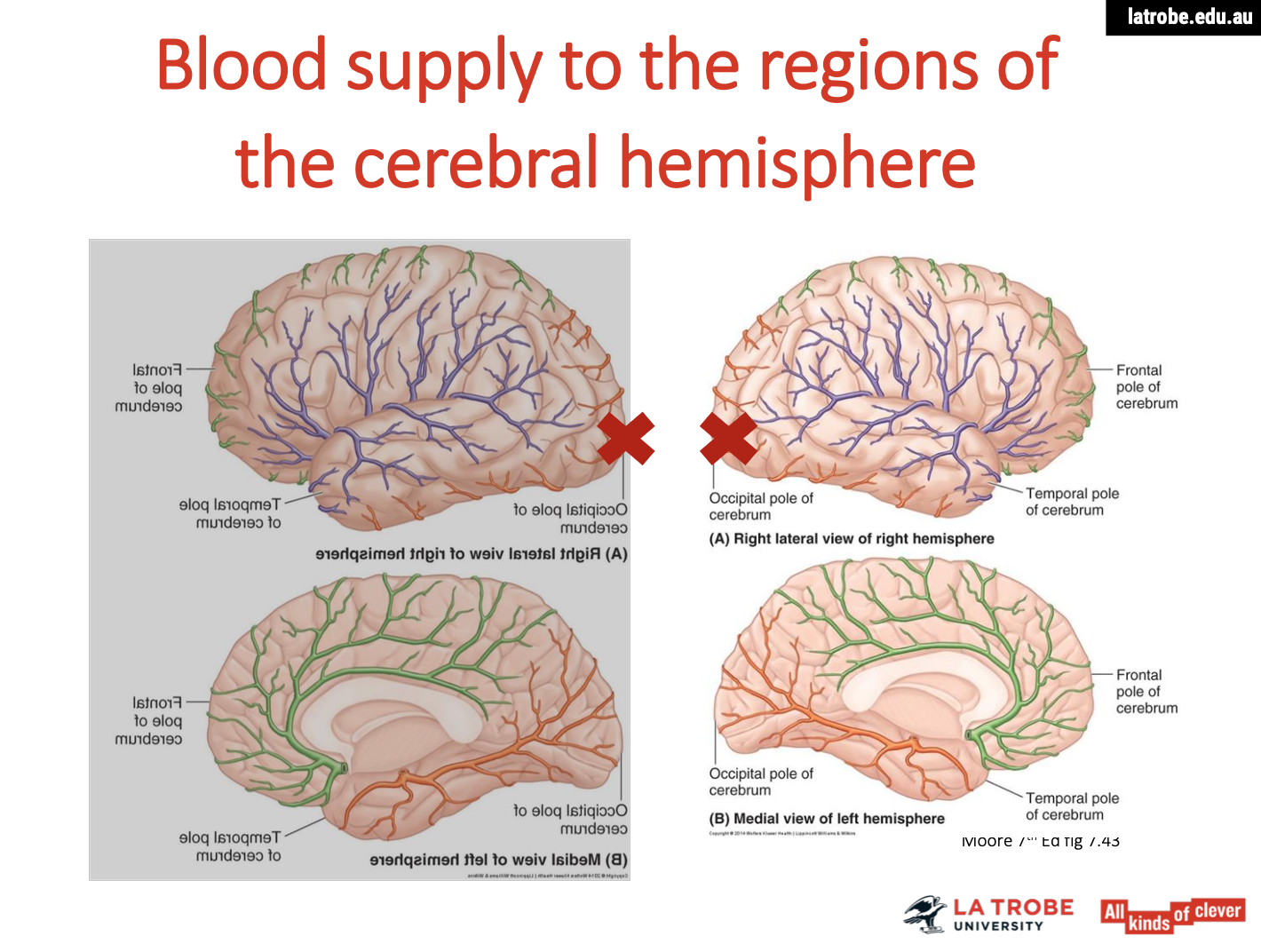
Consequences of Damage to the Occipital Lobes
Cortical Blindness
Definition:
A condition where a person is effectively blind despite having functional eyes and optic nerves.
Mechanism:
Incoming Sensory Information: Visual information reaches the primary visual cortices in the occipital lobes.
Inability to Process: Damage to the cortical areas prevents the brain from processing this sensory visual information.
Result:
The individual cannot perceive visual stimuli, leading to total blindness in the absence of any damage to the eyes or optic nerves.
Summary
Damage to the occipital lobes can lead to cortical blindness, where individuals cannot interpret visual information, despite the physical functionality of their eyes. This highlights the critical role of the visual cortex in visual perception.
Consequences of Damage at the Occipital-Temporal Junction
Impact of Damage at the Occipital-Temporal Border
Integration of Visual Information
Function:
The border of the occipital and temporal lobes is crucial for integrating various types of visual information to create a cohesive understanding of what is being seen.
Role in Recognition:
This area helps combine features such as shape, color, and motion to recognize and interpret visual stimuli as meaningful objects or scenes.
Consequences of Damage
Impaired Object Recognition
Description:
Individuals may perceive visual stimuli but cannot integrate the information into recognizable objects.
Impact:
Difficulty identifying everyday objects, which can lead to frustration and confusion.
Difficulty with Visual Memory
Description:
Damage can impair the ability to remember or recall visual information about previously encountered objects or faces.
Impact:
Challenges in recognizing familiar environments or recalling the appearance of loved ones.
Challenges in Complex Visual Tasks
Description:
Individuals may struggle with tasks that require processing multiple visual elements, such as reading or interpreting scenes.
Impact:
Difficulty in engaging with visual arts, reading, or following visual instructions.
Summary
Damage to the occipital-temporal border disrupts the brain's ability to integrate visual information, leading to significant difficulties in recognizing objects and faces, as well as impairments in visual memory and complex visual tasks. This can greatly affect an individual's daily life and interactions.
Visual Agnosia: Understanding the Condition
Overview of Visual Agnosia
Definition:
Visual agnosia is a neurological condition where individuals can see objects but are unable to recognize or identify them. This occurs despite intact basic visual processing capabilities.
Mechanism of Visual Agnosia
Working Eyes and Brain:
Individuals with visual agnosia have functional eyes and optic nerves, and their primary visual cortices (V1 and V2) process basic visual information such as shapes, colors, and lines.
Integration Failure:
The inability to recognize objects arises when visual information reaches the association areas (border of the occipital and temporal lobes) responsible for integrating and interpreting this information. Damage to these areas prevents the brain from forming a coherent understanding of what is being seen.
Characteristics of Visual Agnosia
Preserved Vision:
Individuals can describe the visual characteristics of an object (e.g., color, size, shape) but cannot identify or label it.
Recognition Issues:
They may say, "I can see something," but when asked to identify it, they express uncertainty or confusion.
Types of Visual Agnosia:
Object Agnosia: Difficulty recognizing common objects.
Prosopagnosia: Difficulty recognizing faces, also known as face blindness.
Implications of Visual Agnosia
Daily Life Challenges:
Individuals may struggle with everyday tasks that rely on visual recognition, such as identifying familiar objects, recognizing people, or navigating their environment.
Impact on Communication:
Communication may be affected as individuals might find it difficult to articulate their thoughts about what they see, leading to frustration and potential social isolation.
Conclusion
Visual agnosia highlights the distinction between seeing and recognizing, emphasizing the brain's critical role in processing and integrating visual information. Understanding this condition is essential for providing appropriate support and interventions for individuals affected by it.
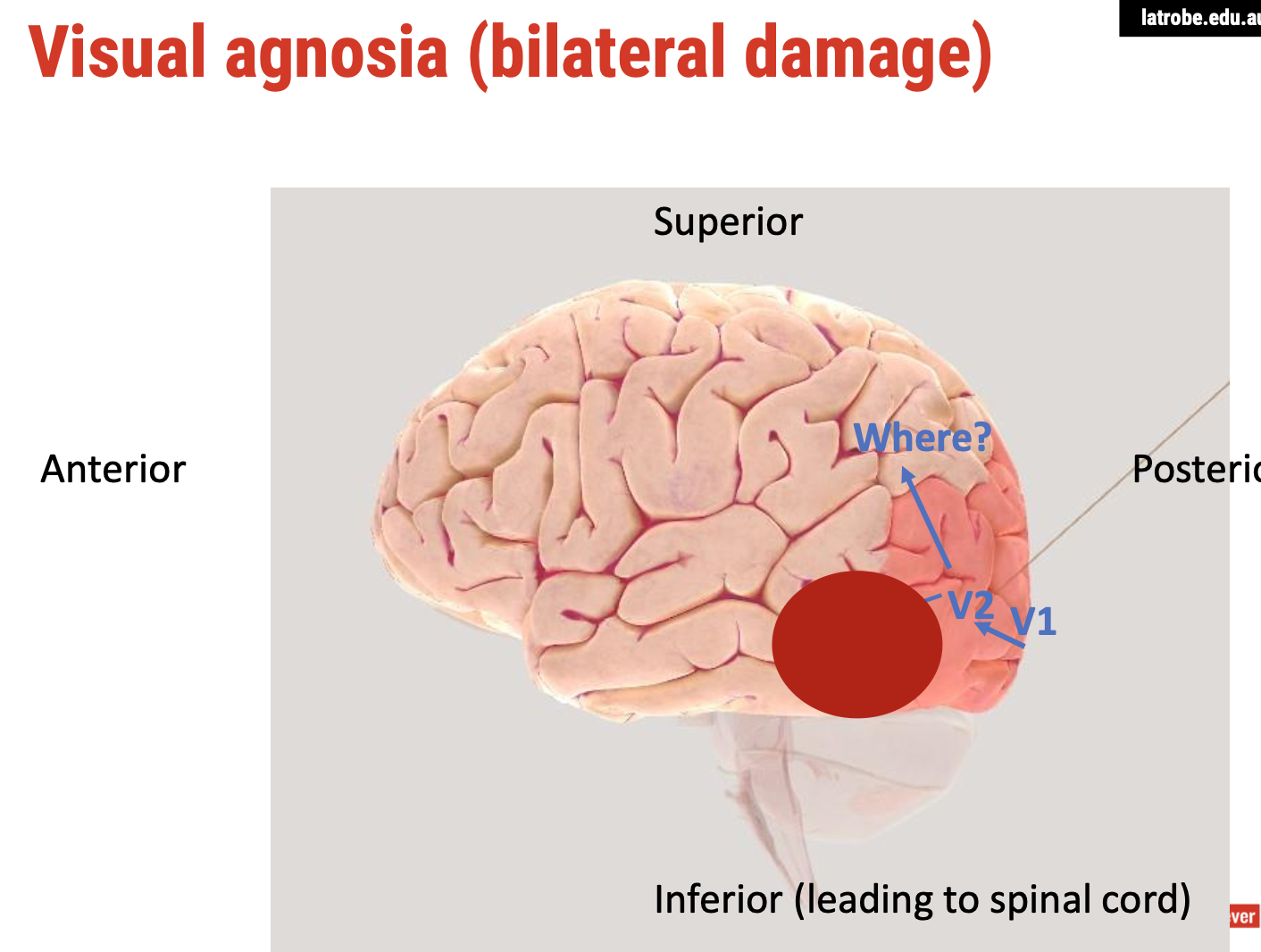
Effects of Damage to the Postcentral Gyrus
Consequences of Damage
Loss of Sensation:
Individuals may experience numbness or a loss of sensation in areas of the body corresponding to the damaged part of the postcentral gyrus. This can lead to difficulty feeling touch, pressure, or temperature changes.
Altered Sensory Perception:
Damage can result in paresthesia, where individuals may experience tingling or prickling sensations in certain body areas. They might also misinterpret sensory inputs (e.g., feeling pain when there is none).
Difficulty with Proprioception:
Individuals may struggle with proprioception, affecting their ability to sense the position and movement of their limbs. This can lead to difficulties in coordination and balance.
Tactile Agnosia:
Known as astereognosis, individuals may be unable to recognize objects by touch alone. They might not be able to identify familiar objects placed in their hands without visual input.
Spatial Awareness Issues:
Damage to the postcentral gyrus can affect spatial awareness, making it difficult for individuals to perceive their body in relation to their surroundings. This can impact their ability to navigate spaces or interact with objects accurately.
Impact on Daily Activities:
The sensory deficits can hinder daily tasks such as dressing, cooking, and other activities that require fine motor skills or sensory feedback from the environment
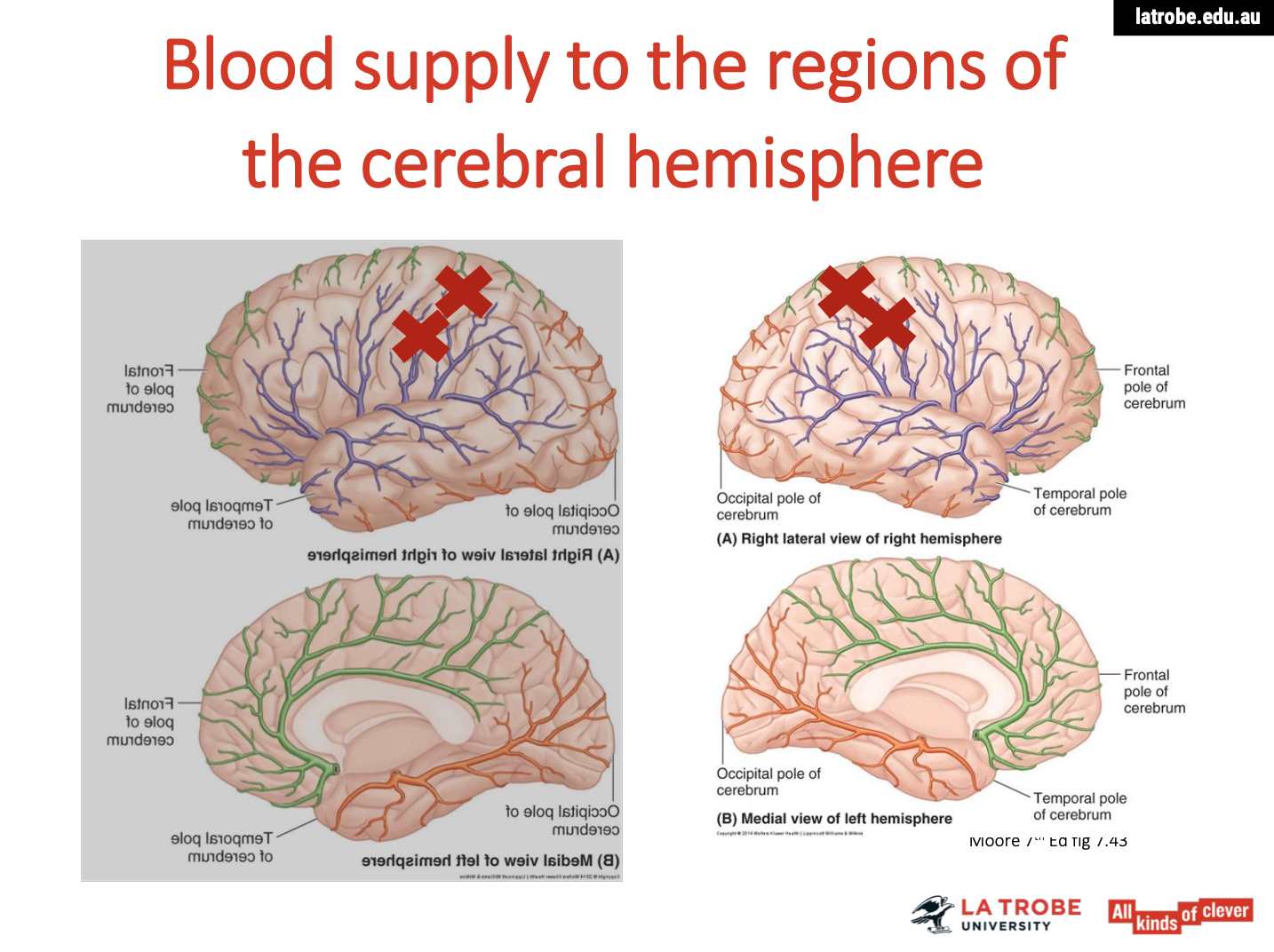
Impact of Damage to the Postcentral Gyrus (S1)
Impact of Damage to the Postcentral Gyrus (S1)
Overview of Sensory Impairment
Sensory Impairment: Damage to the postcentral gyrus, or primary somatosensory cortex (S1), leads to broad sensory impairments in the affected areas of the body.
Affected Areas: Depending on the location of the damage within S1, the impairment may affect:
Face
Arm
Leg
Potentially all these areas if the damage is extensive.
Consequences of Damage
Inability to Register Sensation:
Individuals may lack awareness of tactile stimuli. For example, if someone touches their arm while their eyes are closed, they will not feel it.
Functionality of Sensory Pathways:
While sensory receptors in the skin and the nerves transmitting signals to the brain (through the midbrain and thalamus) are functioning normally, the damage to S1 prevents the brain from processing these signals.
Perception of Touch:
The inability to register sensations means that the individual is effectively unable to feel anything. This can lead to complications in everyday activities and a lack of awareness of potential injuries.
Conclusion
Damage to the primary somatosensory cortex results in significant challenges for individuals, including an inability to perceive touch and sensory information. This lack of awareness can affect their safety, mobility, and overall quality of life, as they cannot respond appropriately to tactile stimuli or recognize bodily sensations.
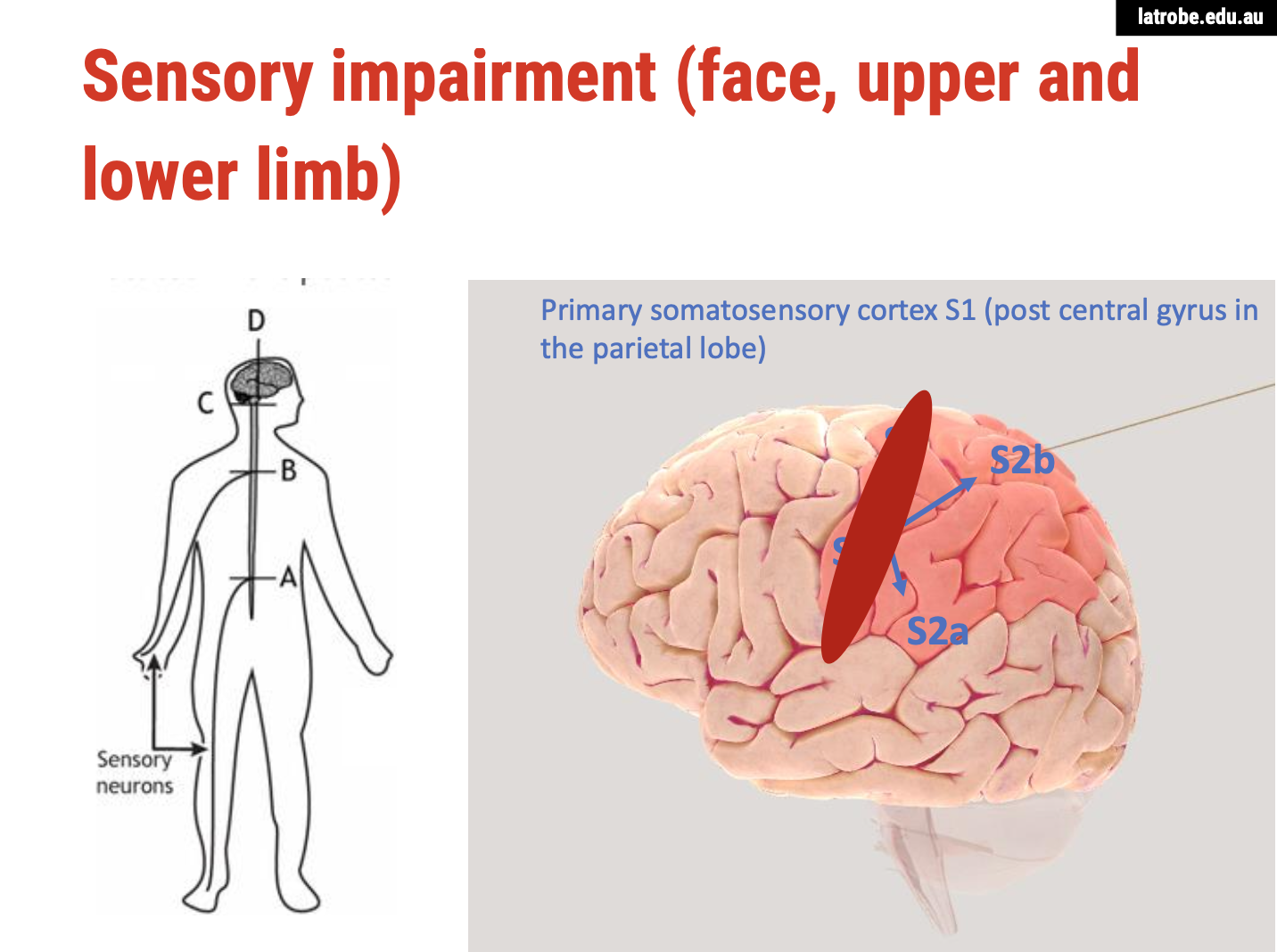
Impact of Damage to the Secondary Somatosensory Cortex (S2)
Overview of Secondary Somatosensory Cortex
Location: The secondary somatosensory cortex (S2) is located in the inferior parietal lobe, adjacent to the primary somatosensory cortex (S1).
Function: S2 is involved in the integration and interpretation of sensory information received from S1, contributing to more complex sensory processing, including the perception of the texture, shape, and size of objects.
Consequences of Damage
Impaired Sensory Discrimination:
Individuals may have difficulty discriminating between different textures, shapes, or sizes of objects. For example, they may struggle to identify objects by touch alone (tactile agnosia).
Loss of Sensory Integration:
Damage to S2 can disrupt the ability to integrate sensory information from different parts of the body. This may lead to challenges in coordinating responses to tactile stimuli, making it hard for individuals to understand the context of the sensory information.
Difficulty with Spatial Awareness:
There may be impairments in spatial awareness and body representation. Individuals might have trouble identifying where sensations are occurring on their bodies, which can affect their motor planning and coordination.
Impact on Memory and Learning:
Since S2 plays a role in associating sensory experiences with memories, damage can hinder the ability to remember and learn from tactile experiences, affecting overall cognitive processing related to touch.
Conclusion
Damage to the secondary somatosensory cortex can significantly affect an individual's ability to process and interpret sensory information. This can lead to difficulties in sensory discrimination, spatial awareness, and memory related to tactile experiences, ultimately impacting their interactions with the environment and daily activities.
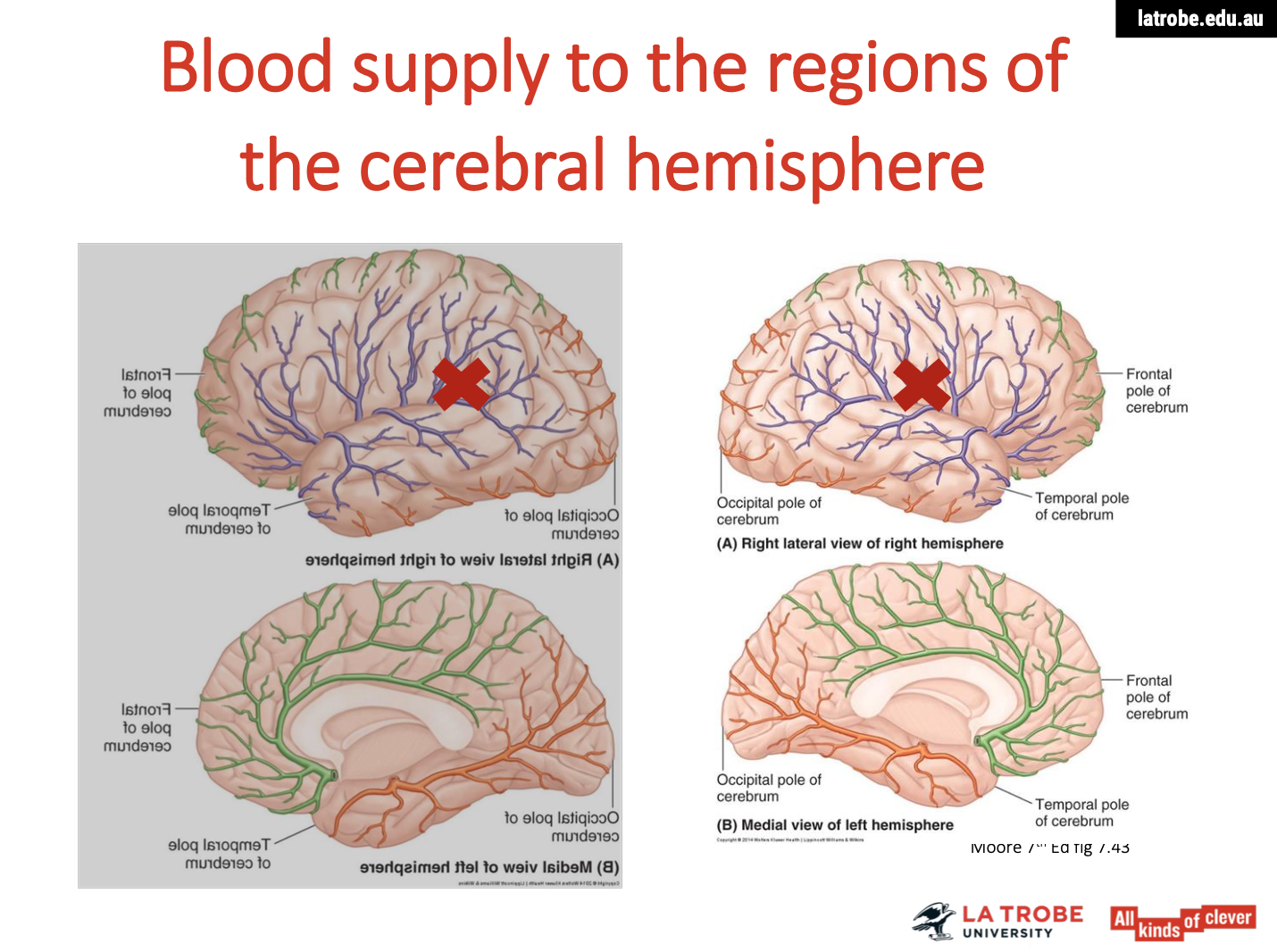
Impact of Damage to S2A (Secondary Somatosensory Cortex A)
Overview of S2A Function
Location: The secondary somatosensory cortex (S2A) is situated in the inferior parietal lobe.
Function: This area is responsible for integrating tactile sensations and enabling the recognition of objects through touch.
Consequences of Damage
Preserved Sensation:
Individuals with damage to S2A will still be able to feel stimuli; they can detect that something is touching them or that they are touching an object.
Impaired Recognition:
While sensory detection remains intact, the integration of that information is disrupted. Individuals will be unable to recognise or identify what they are touching due to the impaired processing in S2A.
Tactile Agnosia:
This inability to recognise objects by touch is known as tactile agnosia.
Tactile refers to the sensory input being related to touch.
Agnosia indicates a lack of knowledge or awareness.
Everyday Implications:
Individuals with tactile agnosia may struggle with everyday tasks, such as identifying items in their pockets, handling utensils, or engaging in activities that rely on touch, such as dressing or cooking.

Impact of Damage to the Superior Temporal Gyrus (Area A1)
Overview of A1 Function
Location: Area A1, or the primary auditory cortex, is located in the superior temporal gyrus of the brain.
Function: This area is responsible for processing auditory information, including the detection of basic sound features such as pitch, volume, and rhythm.
Consequences of Damage
Hearing Impairment:
Individuals with damage to the superior temporal gyrus may experience hearing impairments. They might have difficulty detecting sounds, particularly those that require precise auditory processing.
Difficulty in Sound Discrimination:
While individuals may still perceive some auditory stimuli, they may struggle to discriminate between different sounds. For example, they might find it challenging to tell the difference between similar-sounding words or tones.
Impaired Auditory Comprehension:
Damage in this area can lead to difficulties in understanding spoken language. Individuals may hear words but struggle to comprehend their meaning, leading to communication challenges.
Auditory Agnosia:
In more severe cases, individuals may develop auditory agnosia, where they can hear sounds but cannot recognise or interpret them. For example, they might hear a dog barking but not understand that it is a bark or what kind of animal is making the sound.
Everyday Implications:
These difficulties can significantly impact daily life, affecting communication, social interactions, and the ability to engage with auditory environments. Individuals may struggle to follow conversations, enjoy music, or respond appropriately to auditory cues.
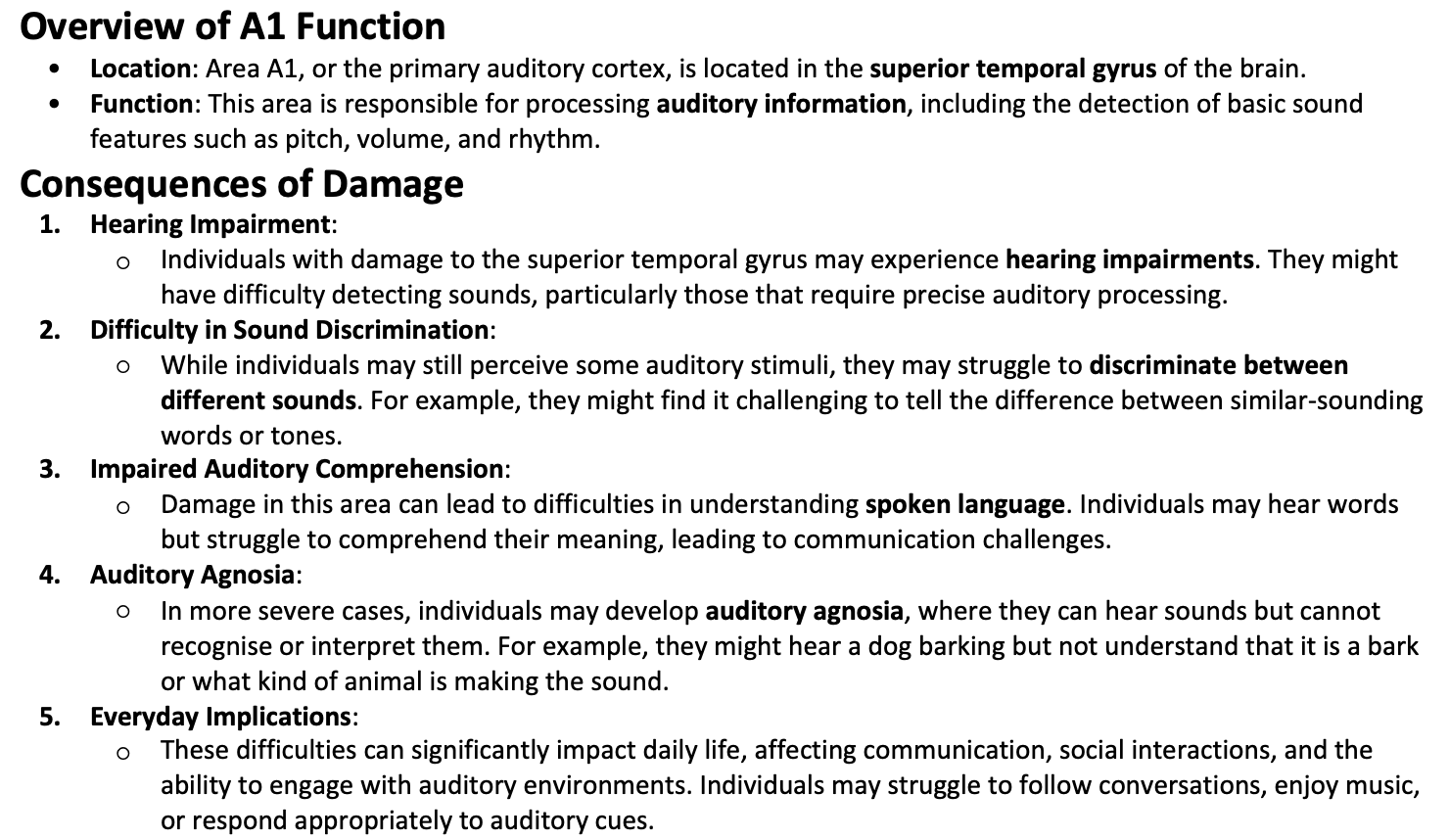
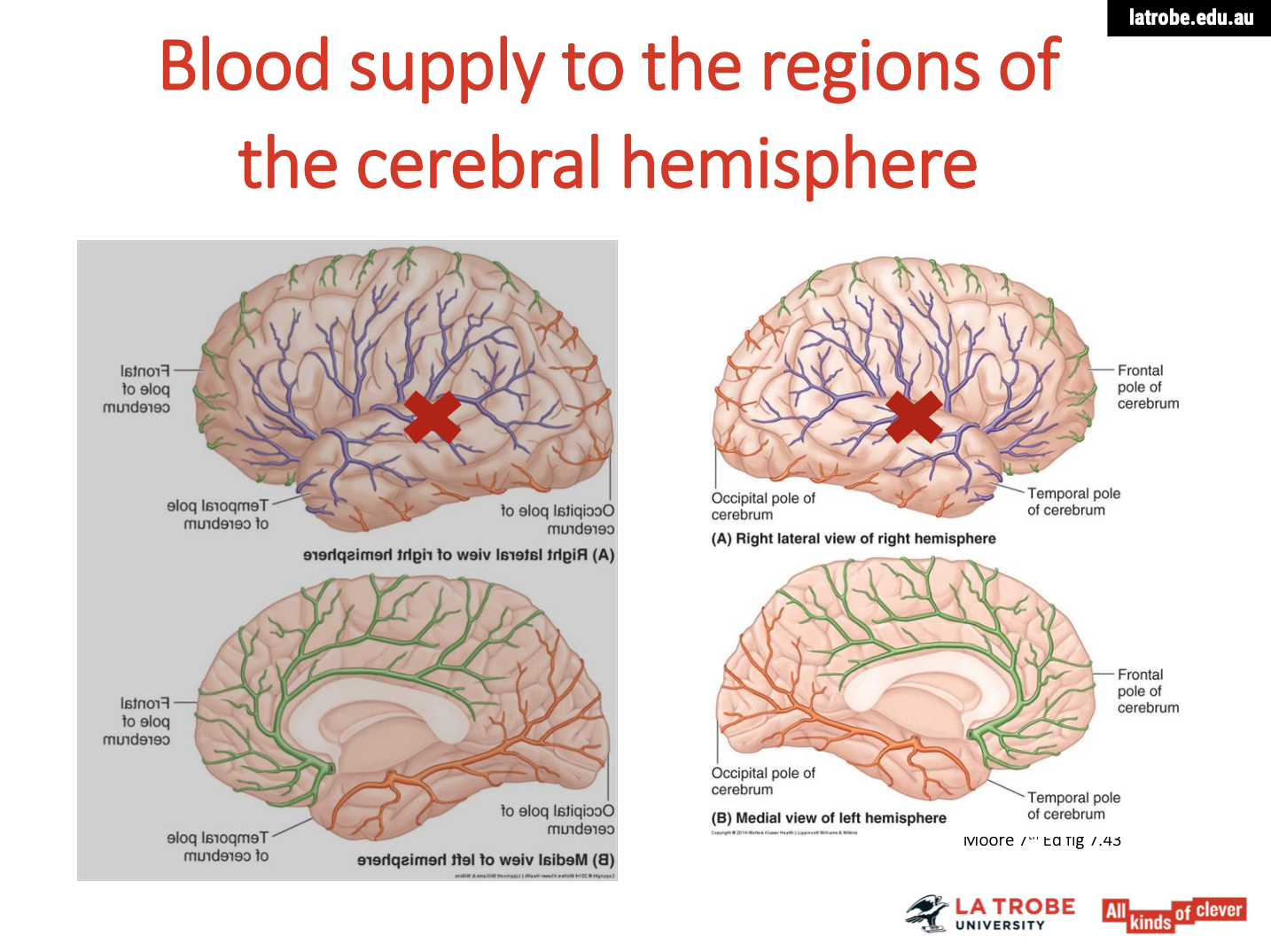
Effects of Damage to the Superior Temporal Gyrus (Primary Auditory Cortex - A1)
Overview of A1 Function
Location: The superior temporal gyrus contains the primary auditory cortex (A1), which plays a crucial role in processing basic auditory information.
Function: A1 is responsible for detecting:
Pitch: The frequency of sounds.
Loudness: The amplitude of sounds.
Location: The spatial origin of sounds.
Consequences of Damage
Impaired Sound Perception:
Individuals may experience a reduction in their ability to perceive sounds accurately. They may struggle to hear specific pitches or loudness levels, leading to a general decline in auditory perception.
Difficulty Discriminating Sounds:
Damage to A1 can impair the ability to discriminate between different sounds. For instance, an individual might have trouble distinguishing between similar-sounding musical notes or voices, impacting their ability to understand speech.
Challenges in Sound Localization:
The loss of neurons responsible for sound localization may result in difficulties in determining where a sound is coming from. Individuals may struggle to identify the direction or distance of auditory stimuli, affecting their spatial awareness.
Auditory Processing Disorders:
Individuals may develop auditory processing disorders, where they can hear sounds but struggle to process and interpret them. This can lead to challenges in understanding conversations, particularly in noisy environments.
Emotional and Social Implications:
These auditory processing difficulties can have significant emotional and social implications, making it hard for individuals to engage in conversations or enjoy music and other auditory experiences. This can lead to frustration, social withdrawal, or feelings of isolation.
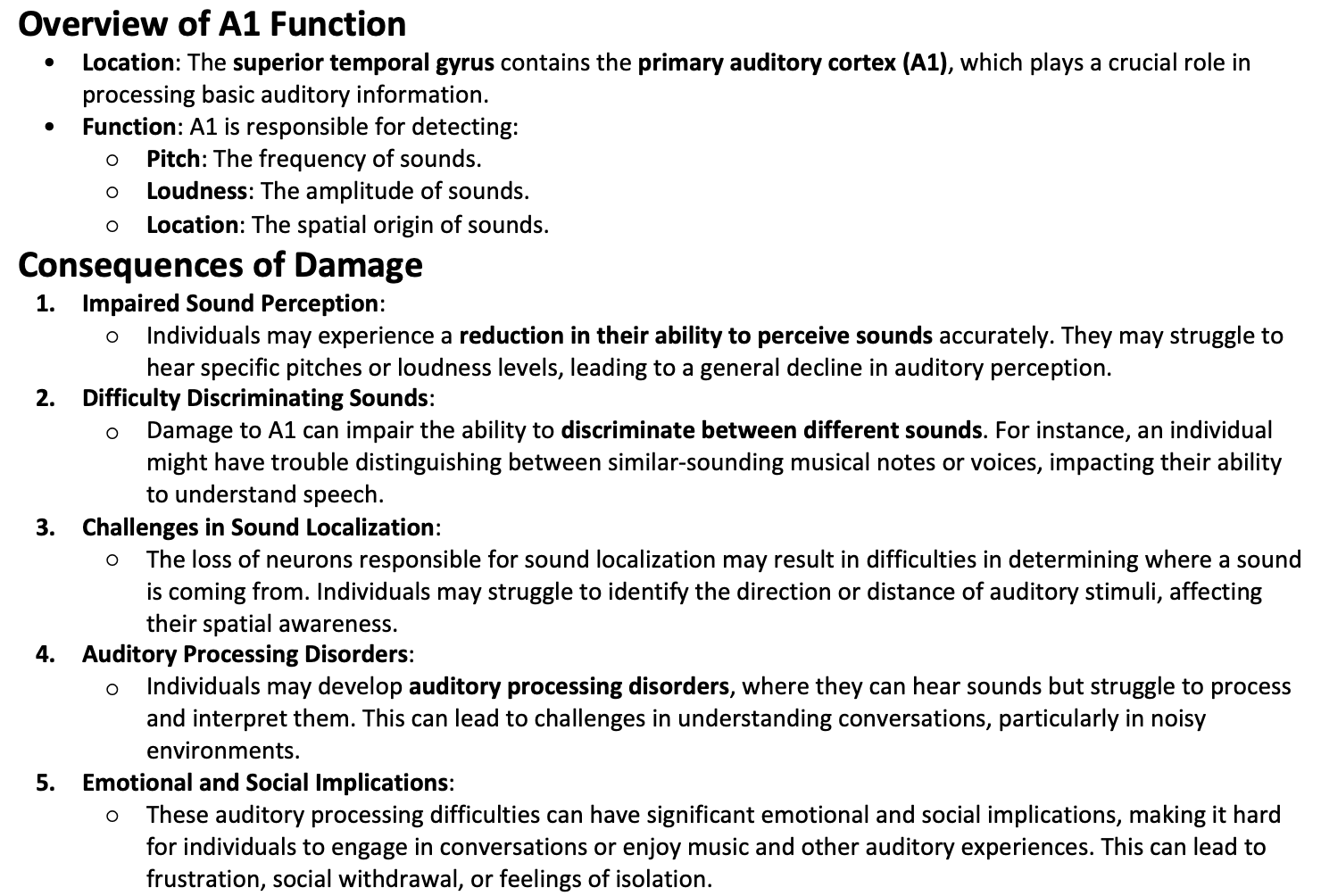

Effects of Damage to the Primary Auditory Cortex (A1)
Overview of A1 Function
Location: The primary auditory cortex (A1) is situated in the superior temporal gyrus and is crucial for processing auditory information.
Function: A1 is responsible for:
Detecting sound frequency (pitch)
Assessing sound amplitude (loudness)
Determining sound location (spatial awareness)
Consequences of Damage
Cortical Deafness:
If damage occurs in A1, individuals may experience cortical deafness, where:
No detection of auditory information occurs.
Although the ears, cochlear nerves, and other auditory pathways are functioning correctly, the brain cannot process incoming sound signals due to damage in the cortex.
Inability to Process Sounds:
Individuals with cortical deafness are unable to perceive sound, leading to a complete lack of auditory awareness. They cannot hear even loud sounds or speech, effectively rendering them deaf despite functional hearing apparatus.
Impact on Daily Life:
The inability to detect auditory information significantly impacts an individual’s ability to engage in conversations, respond to environmental sounds, and enjoy auditory experiences (e.g., music, television).
This can lead to social isolation, difficulty in communication, and frustration.
Potential Emotional Effects:
Individuals may experience feelings of frustration, anxiety, or depression due to their inability to engage with the auditory world, as communication becomes extremely challenging.

Effects of Damage to the Secondary Auditory Association Area (A2)
Overview of A2 Function
Location: The secondary auditory association area (A2) is situated inferiorly in the superior temporal gyrus, adjacent to the primary auditory cortex (A1).
Function: A2 is responsible for:
Integrating auditory information from A1.
Processing complex sounds, such as speech and music.
Associating sounds with meanings and context, enabling recognition and interpretation of auditory stimuli.
Consequences of Damage
Auditory Agnosia:
Damage to A2 can result in a condition known as auditory agnosia, characterized by:
The ability to detect sounds (since A1 is intact) but the inability to recognize or interpret those sounds.
Individuals may hear sounds but cannot identify what they are, such as failing to recognize familiar voices, music, or environmental sounds.
Challenges in Communication:
Individuals with auditory agnosia may struggle to understand spoken language, leading to:
Difficulty following conversations.
Inability to comprehend verbal instructions or questions, impacting daily interactions.
Loss of Contextual Sound Understanding:
The damage impairs the ability to associate sounds with their meanings or contexts, leading to:
Inability to differentiate between similar sounds, such as distinguishing a doorbell from a phone ringing.
Difficulty identifying the source or significance of sounds in the environment.
Emotional and Social Impact:
The inability to recognize sounds can lead to feelings of frustration and isolation, as communication becomes challenging and social interactions are hindered.
Individuals may experience increased anxiety or confusion in social settings where sound plays a critical role.
Role of the Auditory Association Area (A2)
Integration of Auditory Information:
The secondary auditory association area (A2) is crucial for:
Integrating distinct pieces of auditory information.
Combining attributes such as pitch, loudness, quality, and location of sounds.
This integration allows individuals to recognize sounds, determining if it is someone speaking, a dog barking, or a car.
Consequences of Damage to A2
Auditory Agnosia:
Damage to A2 results in a condition known as auditory agnosia, characterized by:
The ability to hear sounds due to functioning A1 (primary auditory cortex).
Inability to recognize or identify the sounds being heard.
Individuals can report, "I can hear something," but cannot specify what it is.
Nature of the Condition:
Auditory agnosia reflects a lack of knowledge regarding auditory stimuli:
The term "agnosia" denotes a lack of knowledge (from the Greek word "gnosis").
In this context, it specifically pertains to auditory information.
Rarity of the Condition:
Auditory agnosia is relatively rare due to:
Cross-innervation from both ears to the left and right auditory cortices.
For auditory agnosia to occur, there must be damage in both association areas of the auditory cortex in both hemispheres.


Consequences of Damage to the Left Temporal Lobe and Surrounding Areas
Affected Areas
Left Temporal Lobe:
Involves regions responsible for auditory processing and language comprehension.
Left Occipital Lobe:
Primarily responsible for visual processing.
Inferior Part of the Parietal Lobe:
Integrates sensory information from multiple modalities and is involved in spatial awareness.
Possible Difficulties from Damage
Language Comprehension Deficits:
Damage in this area may lead to aphasia, specifically Wernicke’s aphasia, characterized by:
Difficulty understanding spoken and written language.
Production of fluent but meaningless speech.
Individuals may produce long, rambling sentences that lack coherence.
Visual Processing Challenges:
Damage reaching into the left occipital lobe may cause:
Difficulties in visual recognition of objects, faces, or scenes (possibly leading to visual agnosia).
Impairment in interpreting visual information, affecting daily activities.
Spatial Awareness and Sensory Integration Issues:
Involvement of the inferior part of the parietal lobe may result in:
Impaired spatial awareness, affecting the ability to navigate the environment.
Challenges in integrating sensory information, leading to confusion about the location and movement of objects.
Overall Cognitive Difficulties:
Individuals may experience:
Challenges in comprehending complex instructions or narratives.
Difficulty in connecting sensory experiences (e.g., associating sounds with corresponding visual cues).

